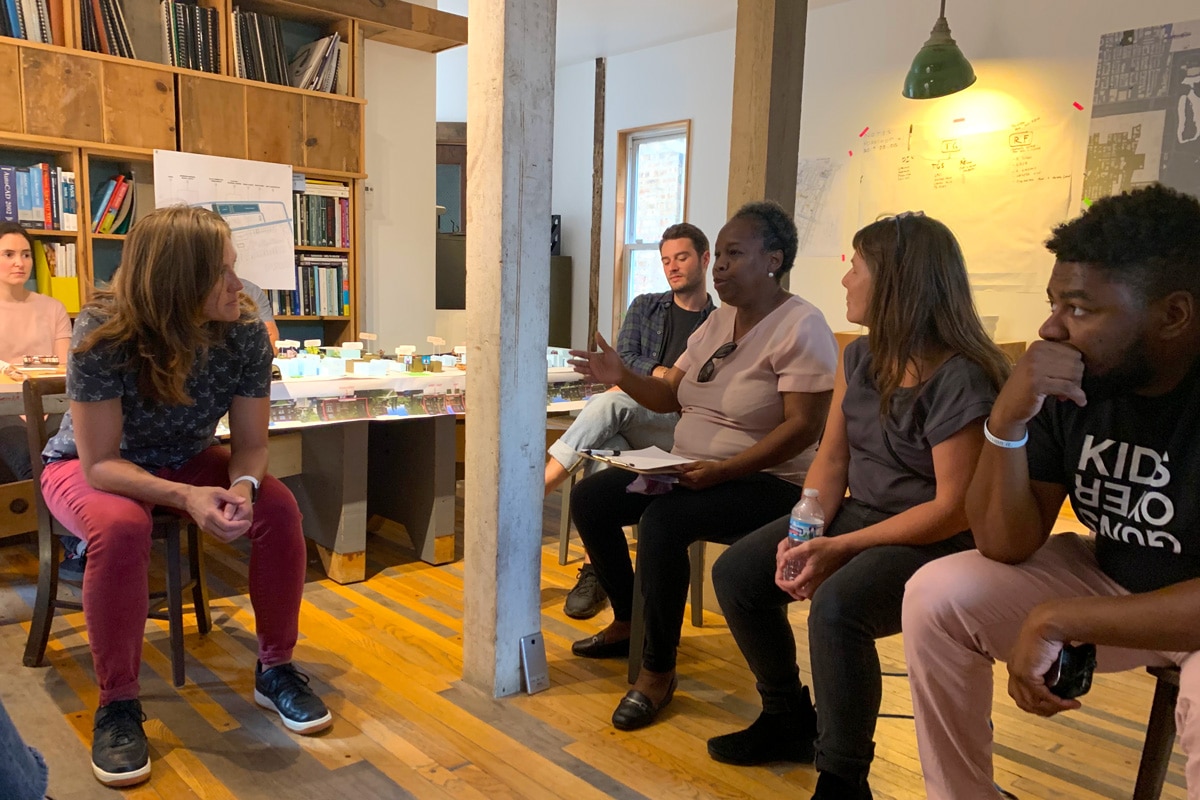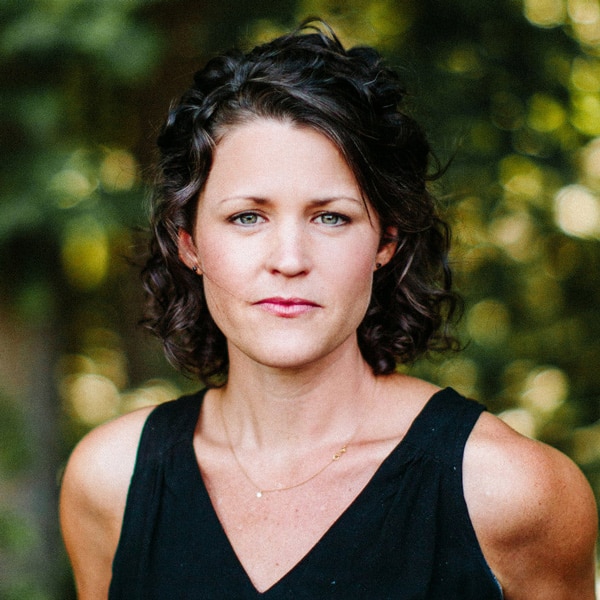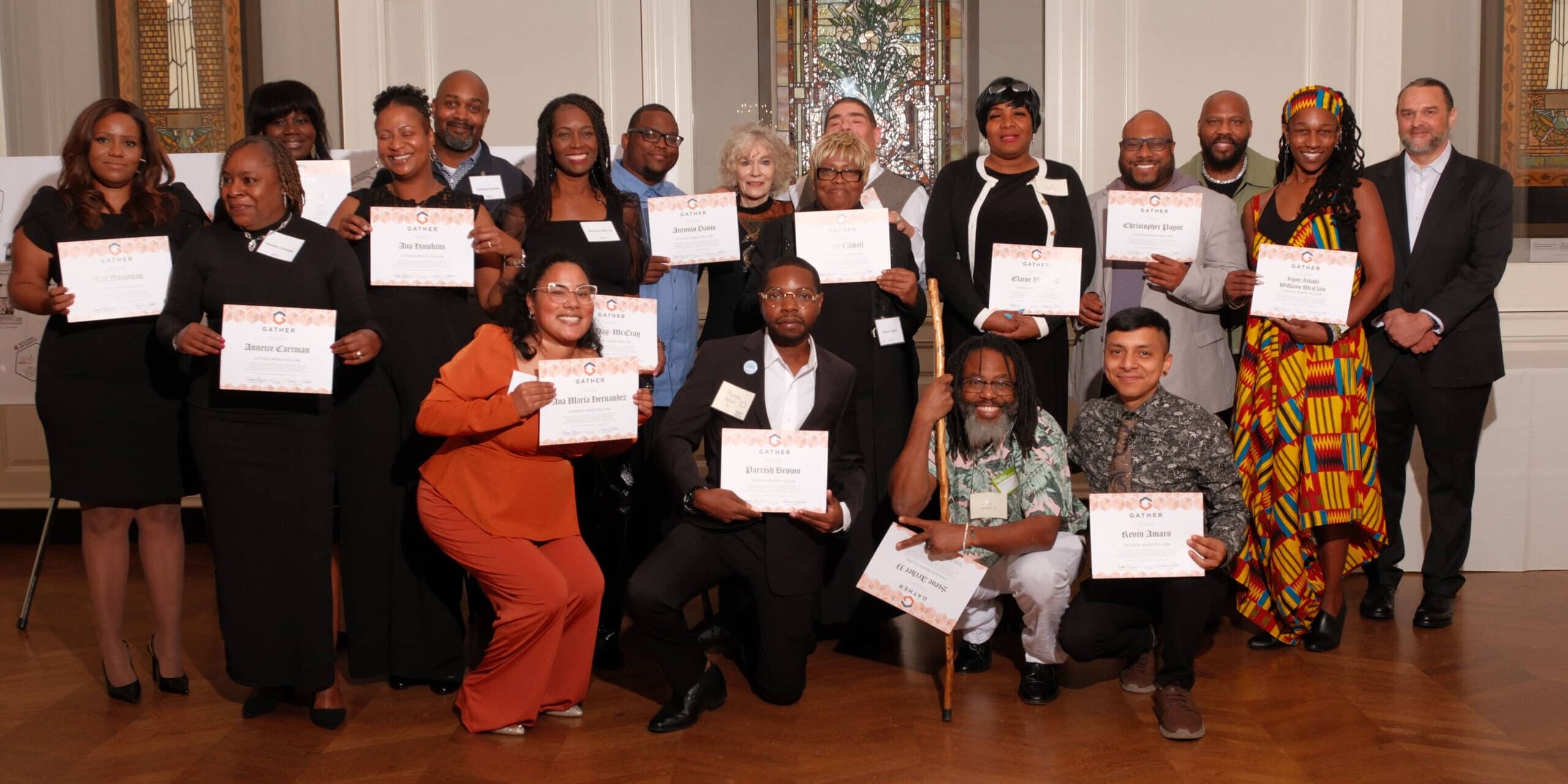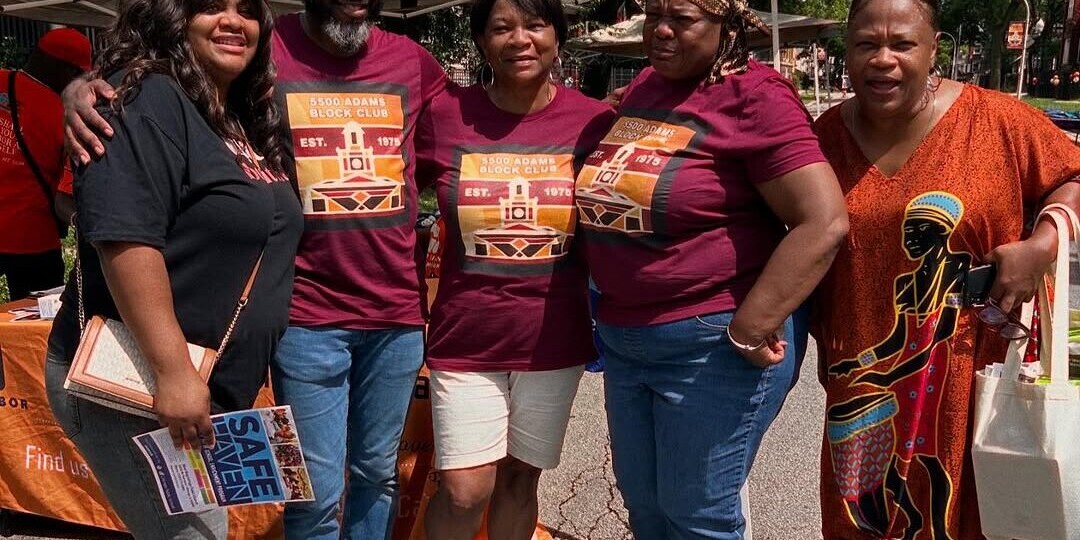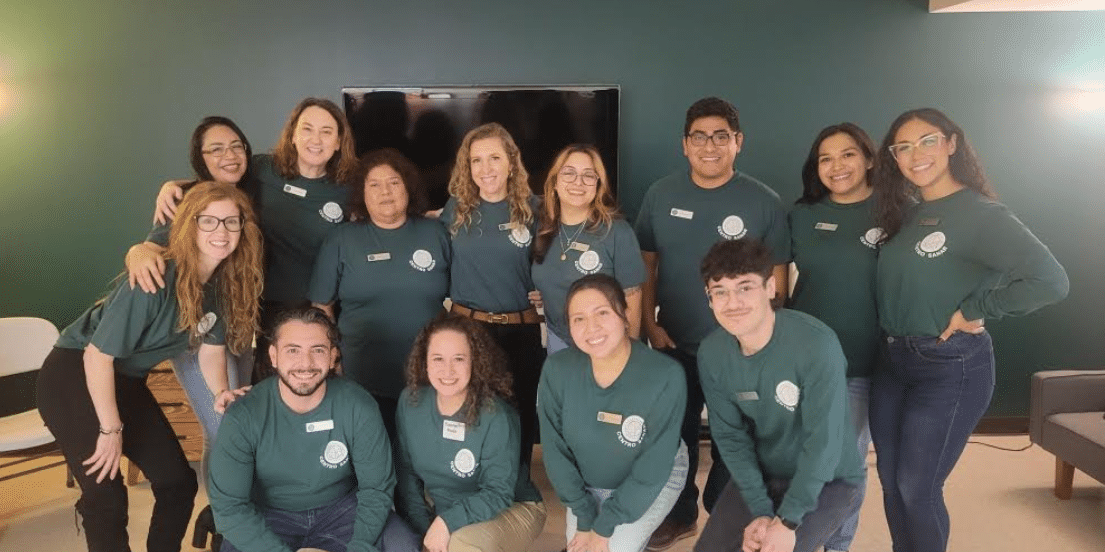How can architects and urban planners work with grassroots activists to make neighborhoods safer?
That was one of the topics of a deep and wide-ranging conversation on August 27 between several Chicago Peace Fellows, Mallory McClaire, chief of staff of the Rebuild Foundation, and Gia Biagi, principal of urbanism and civic impact at famed architectural office Studio Gang.
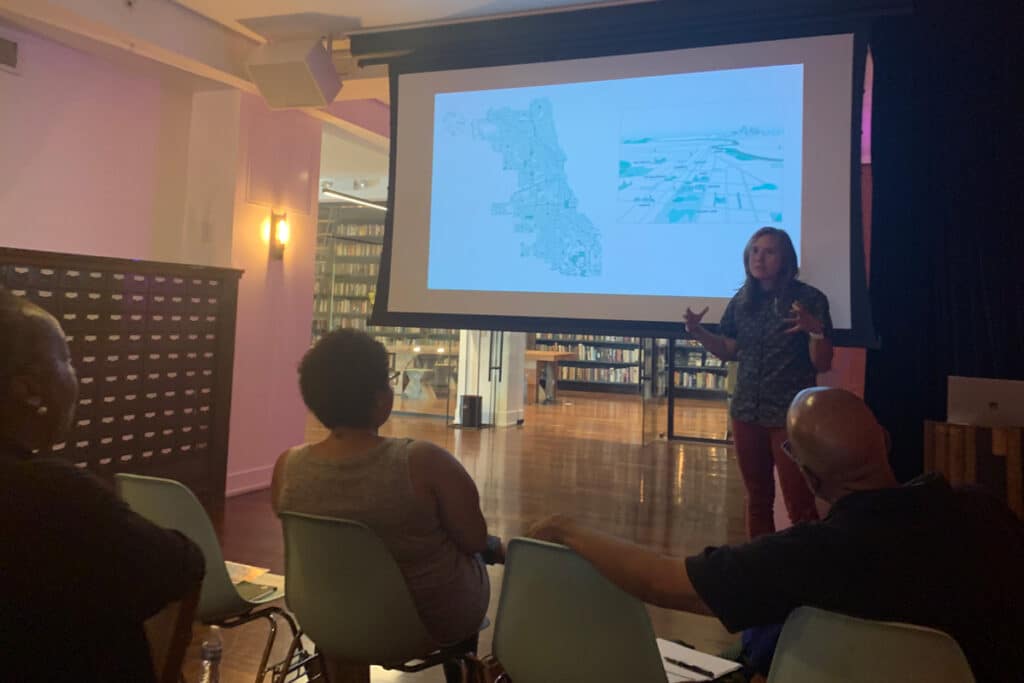
The discussion took place at the Stony Island Arts Bank, a historic financial institution on a main boulevard in the Grand Crossing neighborhood on the South Side that had fallen into disrepair, but was rehabbed into a gallery space, archives and community art center.
While the Fellows ate lunch, Gia began the meeting with a presentation of several projects she and her team had completed in which they explored the assets that community anchors and public spaces can become when cities and citizens invest in collective urban life. She reviewed two projects, Reimagining the Civic Commons and the Mayor’s Office of Criminal Justice: Neighborhood Activation Study in New York, both of which look at civic assets like parks, libraries, and schools as more than physical spaces, but as opportunities for social transformation and inclusion.
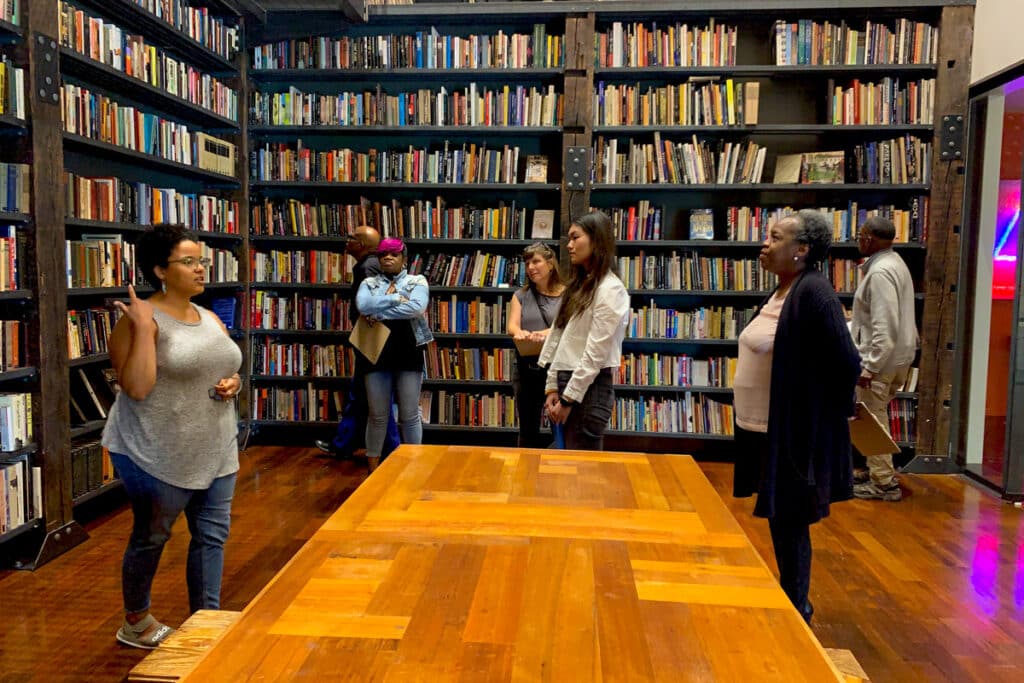
Mallory gave an overview of the Rebuild Foundation, a platform for art, cultural development, and neighborhood transformation. Founded by Chicago-born artist Theaster Gates, their projects seek to strengthen communities by offering free arts programming, creating cultural amenities within the neighborhood, and developing affordable housing and work/studio space for local residents.
The Rebuild Foundation’s work is informed by three core values – Black people matter, Black spaces matter, and Black objects matter. — Mallory McClaire
The Rebuild Foundation recently hired Studio Gang’s Urbanism and Civic Impact team to create a strategic plan to leverage the properties they own to collectively improve the lives and livelihoods of the neighborhood residents.
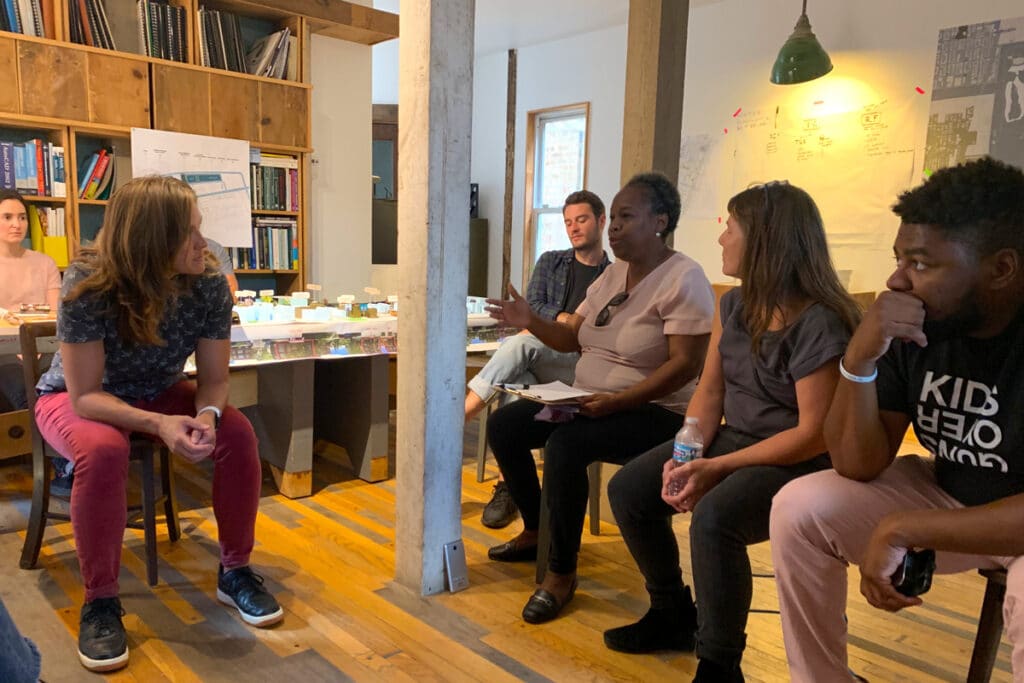
After these presentations, Mallory led the Fellows on a tour of the Stony Island Arts Bank, where they sat in the original leather chairs preserved from the office of Ebony/Jet Founder and Publisher John H. Johnson, reviewed the enormous Johnson Publishing Book Archive, and admired legendary DJ Frankie Knuckles’ record collection. Mallory took the Fellows to a special room where a collection of racist memorabilia and propaganda had been collected and tucked away in drawers, to be reviewed only during facilitated discussions. Fellows compared this alternative display technique with the Field Museum’s Sculptures of Mankind exhibit they viewed and discussed with staff at that institution recently.

The Peace Fellows solemnly visited the exhibit Objects of Care: Material Memorial for Tamir Rice, the gazebo in which the 12-year-old Tamir Rice was playing when he was shot to death by a Cleveland police officer in 2014. Having fought against the gazebo’s demolition, Samaria Rice, Tamir’s mother, requested that the Rebuild Foundation preserve it as a space for community care, dialogue, and public engagement.
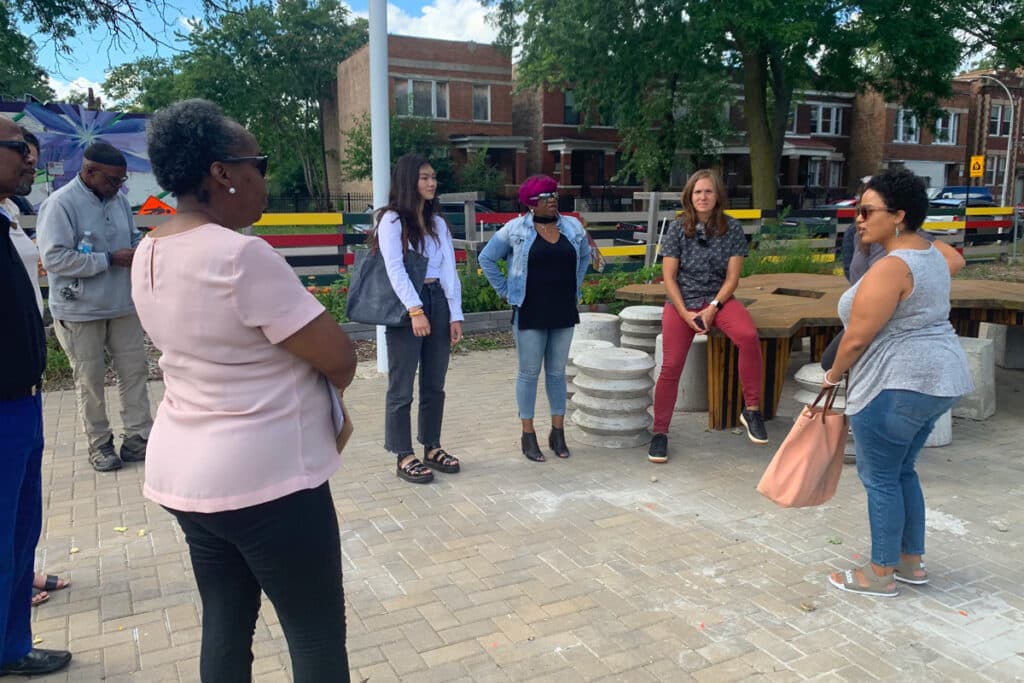
Mallory and Gia then took the Fellows on a tour through the neighborhood, stopping at the buildings renovated and owned by the Rebuild Foundation. The first stop was the Dorchester Community Garden, a public garden space created in partnership with the Rebuild Foundation and NeighborSpace. As children ran through the raised planters and climbed on the built structures, Peace Fellow Robin Cline, assistant director at NeighborSpace, talked about the history and creation of the garden and the impact it has had on the neighborhood.
“A successful space depends so much on the eyes on the space and the commitment to welcome people to sit in these public spaces. We’re going to program the spaces, make the spaces have meaningful activity, and we’re OK with people using the space the way they might want to use it.” — Robin Cline
The group then gathered around snacks and beverages at Rebuild’s “Listening House” and toured the on-site workspace Studio Gang set up. They also reviewed a model of an asset map of Rebuild and the surrounding neighborhood. Amidst precedent images, working models, and sketches, the group discussed the potential to use the tools and insights of urban planning and civic design to create impact through the built environment and how it could influence their own work.
Fellow Sokoni Karanja talked about the grassroots peace-building efforts in his neighborhood near Washington Park. He relayed to the group how organizing Saturday street cleanings, organizing tenant unions and block clubs, creating several community phone trees, and getting commitments from local citizens and business owners recently helped reduce violence in his neighborhood from 27 homicides in 2016 to 2 so far this year.
“I think violence prevention may be the ultimate goal of our initiative, but really what we want is community cohesion and developing norms of what the community will and will not tolerate. That’s really where the impact will come from. Violence prevention stems out from that.” — Sokoni Karanja
Mallory spoke about Rebuild’s history as an organization built by an individual’s desire to invest in his own community. Theaster Gates grew up in Chicago and continues to live in the neighborhood, desiring to be an example of what it means to invest in your community. Rebuild has found that their neighbors want transparency as well as a pathway to engagement.

Fellow Jackie Moore said that invitation was all the more important because Greater Grand Crossing has a low percentage of home ownership. When she drives up and down streets in her community, some are pristine and others are not, and almost always, the condition of the street has a direct relationship to whether people own their homes.
When I own the land, I don’t need to wait for permission. I don’t think it’s from lack of interest, or lack of design. I think it’s from lack of agency. When you own something, you don’t wait for others to take care of it. When you design spaces with the assumption that they will take care of what has been designed for them, you open yourself up to more opportunities.” — Jackie Moore
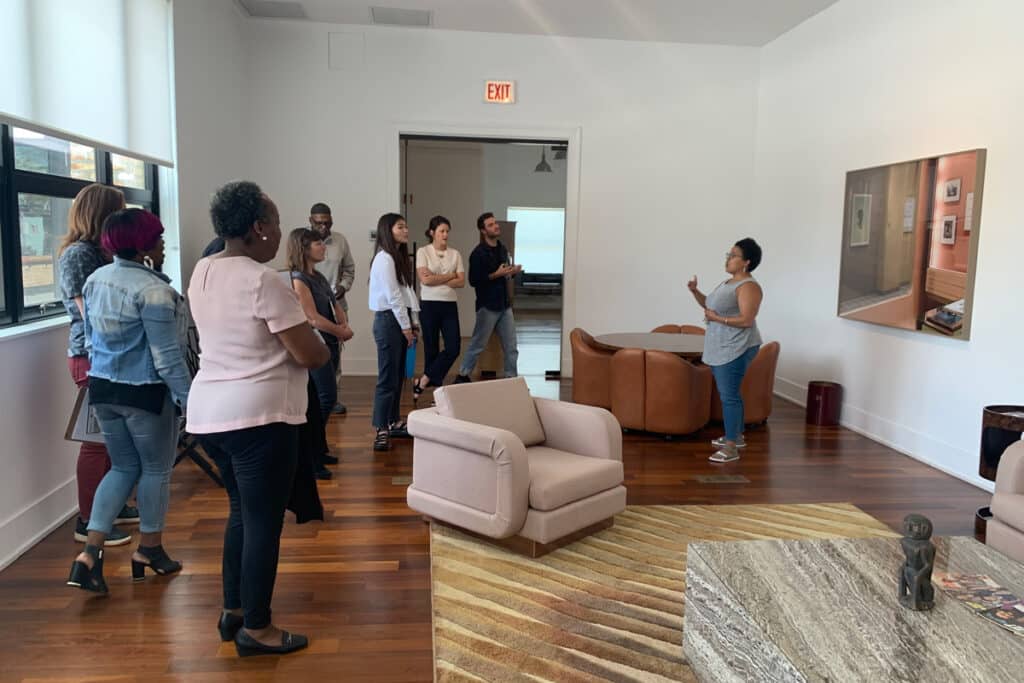
The meeting concluded with a discussion of resources, grants, land trusts and Tax Increment Financing districts – mechanisms that have been set aside for community development – as well as who has figured out how to leverage these resources. The Fellows agreed that urban planners like Gia and her team, and developers and organizations like Rebuild Foundation are potentially good partners for grassroots leaders who are daily making change in their neighborhoods. In addition to well-designed public spaces and informed public policy, planning and design tools can help support the visualization of goals, creation of processes, and leveraging of assets in the work of peace building in our physical environment.
Author
-
As Senior Director of Design, Oz Ozburn brings her planning and design skills to support all aspects of the work of the Goldin Institute. As an architect, Oz is experienced in deep listening and research to uncover opportunities to solve tough challenges through thoughtful design and skillful implementation.
View all posts
